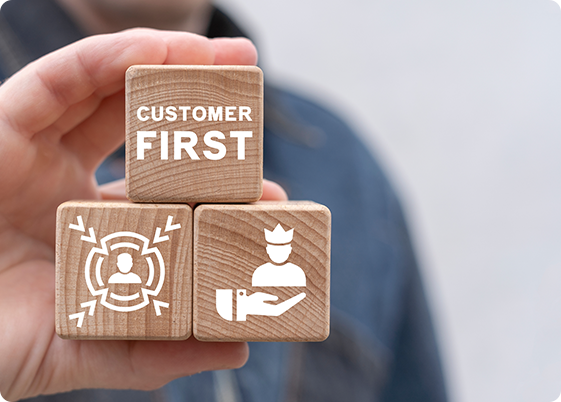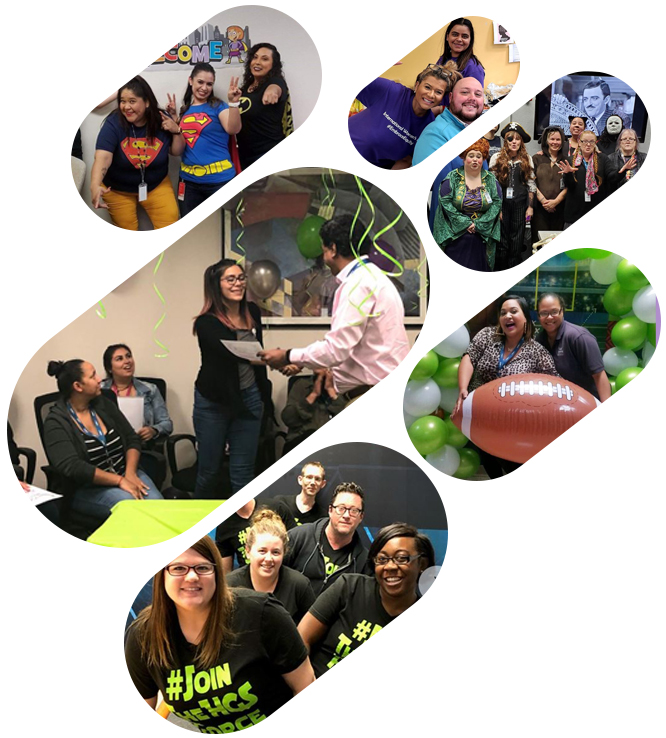Essential KPIs to Measure Remote Customer Service Success.
These are the best remote customer service KPIs that you can use to measure your succes

First Response Time (FRT)
First Response Time (FRT) is the time taken for a customer service representative to reply to a customer's initial inquiry. This KPI helps to determine customer satisfaction, builds trust, and reduces frustration. It reflects the company's efficiency and can improve customer retention, giving a competitive advantage and encouraging positive reviews. This work from home call center jobs KPI metric reflects responsiveness and sets the tone for the customer experience.
- Target: Aim for a short FRT, ideally within minutes, for high-priority channels like live chat or phone calls.
- Why it matters in customer service performance: First Response Time (FRT) is crucial for customer service performance as it reflects the company's efficiency, enhances customer satisfaction, and builds trust by addressing inquiries promptly.
Average Resolution Time (ART):
Average Resolution Time (ART) is the average duration it takes to resolve a customer support ticket or issue, from the initial report to the final resolution, indicating service efficiency. This KPI metric encompasses the entire customer service journey, from initial contact to resolution.
- Target: A lower ART is ideal, signifying efficient problem-solving and minimizing customer wait times.
- Why it matters in customer service performance: Average Response Time (ART) is crucial in customer service as it directly impacts customer satisfaction, loyalty, and brand perception. Quick response times demonstrate reliability, reduce frustration, and provide a competitive advantage by enhancing overall service efficiency.

Customer Satisfaction Score (CSAT)
Customer Satisfaction Score (CSAT) is a metric used to measure customers' satisfaction with a product, service, or interaction by asking them to rate their experience, typically on a scale of 1-5. This KPI is often gathered through surveys sent after each interaction, asking customers to rate their satisfaction on a scale.
- Target:Strive for a high CSAT, indicating your team effectively resolves issues and exceeds expectations.
- Why it matters in customer service performance:Customer Satisfaction Score (CSAT) is essential in customer service because it provides insights into customer experiences and satisfaction levels. High CSAT scores indicate effective service, fostering loyalty and retention, while low scores highlight areas for improvement, helping enhance overall service quality and competitiveness.
Net Promoter Score (NPS)
Net Promoter Score (NPS) measures customer loyalty by asking how likely they are to recommend a company or product to others, using a scale from 0 to 10.
- Target: Aim for a high NPS, signifying a loyal customer base that advocates for your brand.
- Why it matters in customer service performance:Net Promoter Score (NPS) is vital in customer service as it measures customer loyalty and likelihood to recommend. High NPS reflects strong brand advocacy, driving growth and highlighting service strengths and weaknesses.

First Contact Resolution (FCR)
First Contact Resolution (FCR) measures a company's ability to resolve customer issues or inquiries during their first interaction with support, enhancing efficiency and customer satisfaction by minimizing repeat contacts. This KPI metric reflects the team's ability to efficiently understand and address customer needs.
- Target:A high FCR is desirable, reducing the need for frustrating back-and-forth communication for customers.
- Why it matters in customer service performance: First Contact Resolution (FCR) is crucial in customer service as it measures the ability to resolve customer issues during the initial interaction. High FCR rates indicate efficient and effective service, leading to increased customer satisfaction, loyalty, and reduced operational costs by minimizing repeat contacts.
Contact Volume
Contact volume refers to the total number of customer interactions received by a business through various communication channels, such as phone calls, emails, chat, and social media, within a specific period. Analyze trends in contact volume to see if they correlate with product launches, marketing campaigns, or seasonal fluctuations.
- Target: While there's no single "ideal" volume, monitor trends and ensure you have adequate resources to handle inquiries without compromising service quality.
- Why it matters in customer service performance: Contact volume is important in customer service as it helps manage workload, allocate resources efficiently, and identify trends. Understanding contact volume enables better staffing, quicker responses, and improved customer satisfaction and service efficiency.

Agent Productivity
Agent productivity measures the efficiency and effectiveness of customer service agents, typically evaluated by metrics like the number of cases handled, average handle time, and customer satisfaction scores within a given period.
- Target: Aim for a balance between efficiency and quality. While handling a high volume of inquiries is positive, ensure quality is good.
- Why it matters in customer service performance:The agent productivity KPI is crucial in customer service as it ensures efficient handling of inquiries, reducing wait times and increasing satisfaction. High productivity leads to better resource utilization, cost savings, and improved customer experiences.
Customer Effort Score (CES)
The Customer Effort Score (CES) is a metric that gauges how much effort customers must exert to interact with a company, typically through service or support, impacting overall satisfaction and loyalty.
- Target: A low CES is ideal, indicating a seamless customer service experience.
- Why it matters in customer service performance: Customer Effort Score (CES) KPI matters in customer service because it measures the ease of resolving issues. Lower effort scores indicate smoother, more efficient interactions, enhancing satisfaction, loyalty, and overall service effectiveness.

Employee Engagement and Satisfaction
Employee Engagement and Satisfaction is a KPI metric that evaluates the level of enthusiasm and contentment employees have towards their work and workplace. Measuring engaged and inspired employees through surveys or feedback sessions provides valuable insights into your remote work environment.
- Target: Strive for a high level of employee engagement by exploring aspects like a sense of belonging and connection to the team.
- Why it matters in customer service performance: Employee engagement and satisfaction KPIs are vital in customer service as they directly impact service quality and efficiency. Engaged, satisfied employees are more motivated, leading to better customer interactions and improved overall performance.
Conclusion
Remote customer service has become the cornerstone of positive customer experiences. Equipping your team with the right tools and fostering a supportive work environment are crucial, but measuring success requires a data-driven approach.
The nine KPIs for customer service call center explored in this article – First Response Time, Average Resolution Time, Customer Satisfaction Score, Net Promoter Score, First Contact Resolution, Contact Volume, Agent Productivity, Customer Effort Score, and Employee Engagement – provide a comprehensive framework for evaluating your remote customer service team's performance.
By regularly monitoring these metrics, you gain valuable insights into areas that are flourishing and require improvement. A data-driven approach allows you to identify trends, optimize processes, and make informed decisions to enhance customer satisfaction and, ultimately, drive business growth.
Remember, preparing for work from home setup essentials is important. Embrace a growth mindset, prioritize both customer and employee satisfaction, and leverage technology effectively. By doing so, you can empower your remote team to deliver experiences that keep your customers happy, loyal, and coming back for more.
 US
US Canada
Canada Colombia
Colombia India
India Jamaica
Jamaica Philippines
Philippines UK
UK SA
SA
